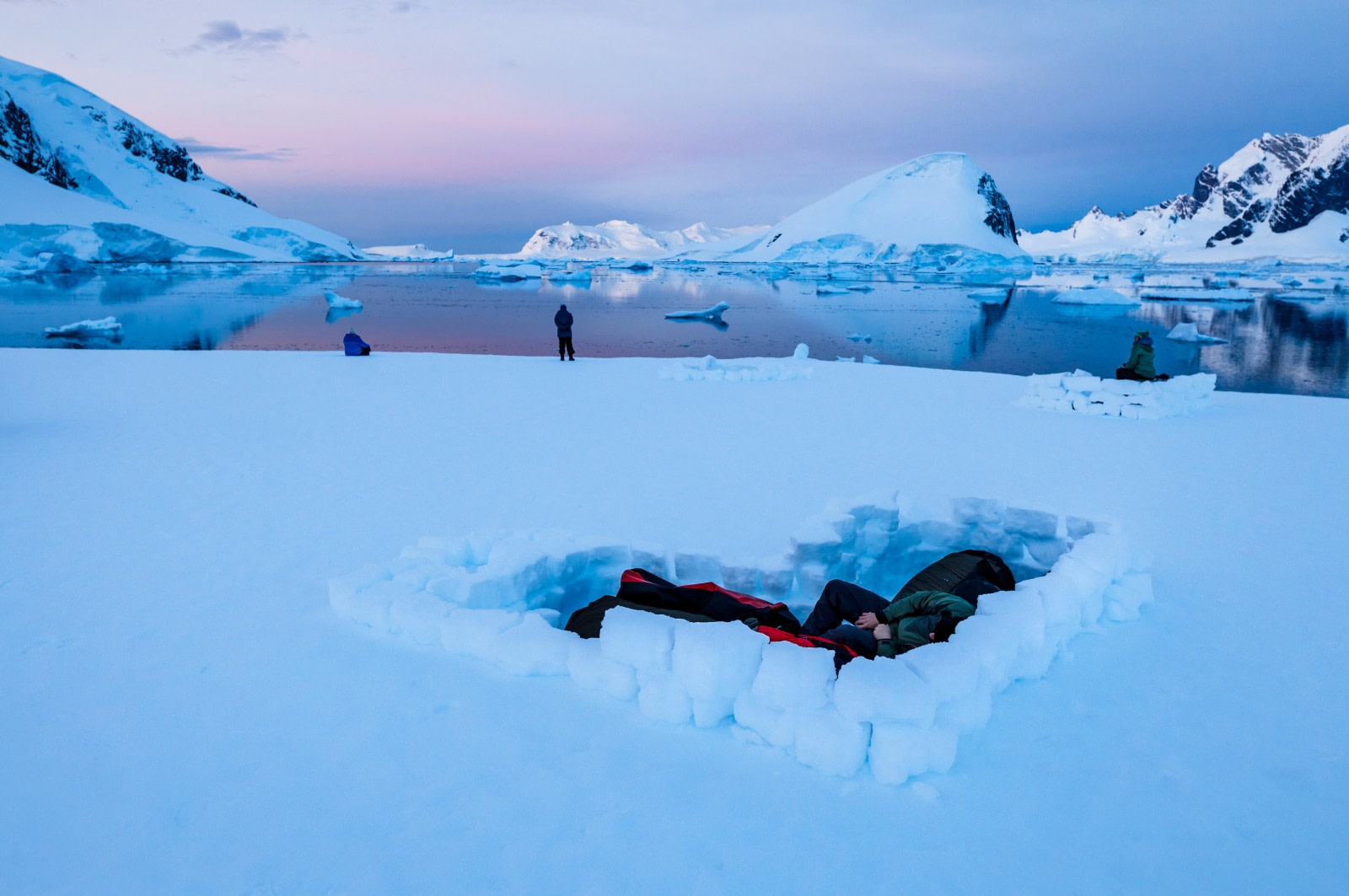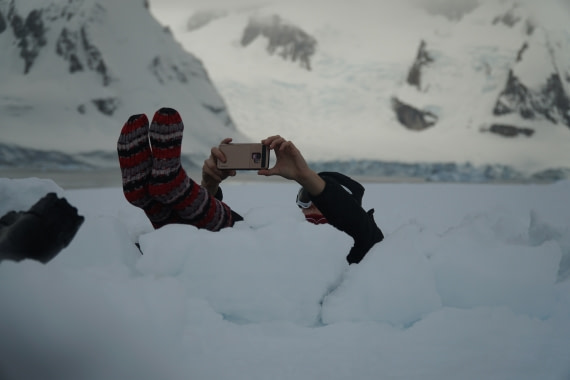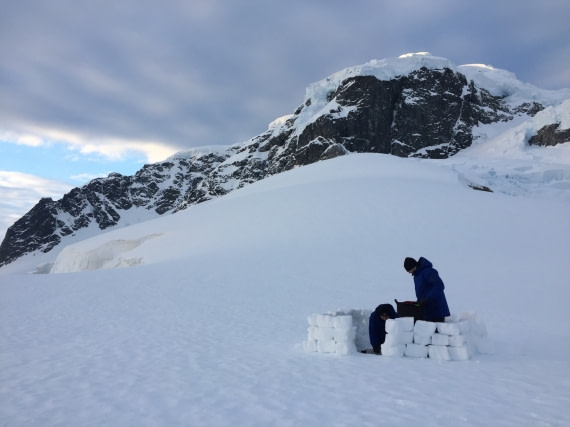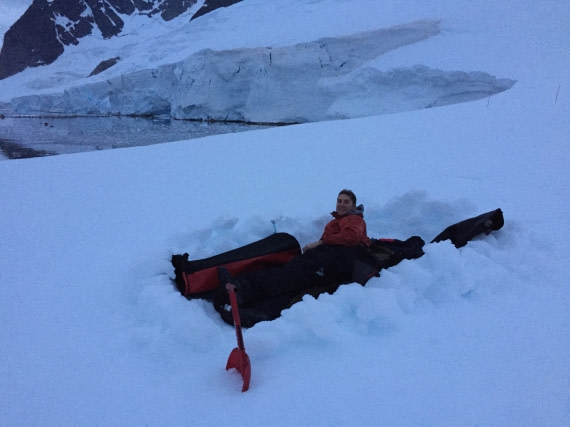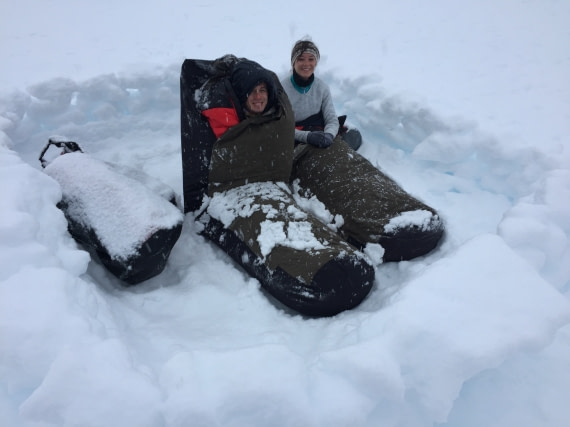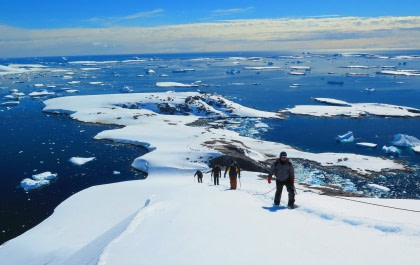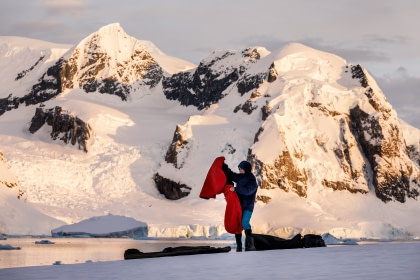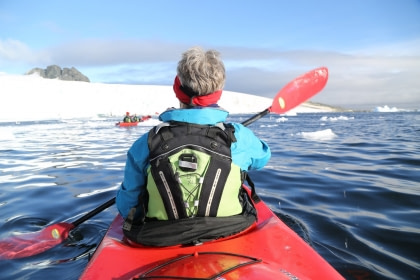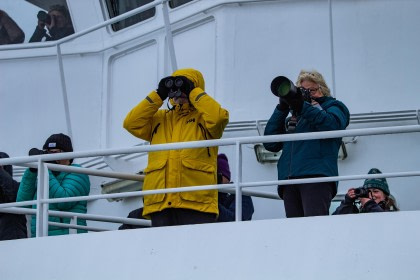Camping in the Antarctic wilderness
For those craving a truly immersive polar adventure, our open-air camping activity gives you the chance to experience the Antarctic wilderness as few travelers have.
We provide the necessary camping gear, including breathable bivouac bags that are wind and waterproof and a lightweight alternative to tents. And our polar sleeping bags will keep you warm, dry, and comfortable during the enchanting Antarctic night.
All campers will be assisted and supervised by experienced expedition guides.

General information on our camping activity
- Camping is available based on weather, site conditions, and environmental regulations.
- Everyone can participate, no previous experience required.
- This activity is only offered on select Hondius, Plancius and Ortelius voyages.
- The maximum number of participants is limited to 30 per night.
- All camping activities are supervised by expert field guides.
- Basic equipment is provided by OEX (bivouac bags, mats, boots).
- One camp night must be booked prior to your trip, but extra nights may be arranged on board (no waitlist). Please see our Dates & Rates for details.

Details of the Antarctic camping experience
We aim for at least one night of camping on each designated trip, but the expedition team will offer more if possible. Additional nights are determined by weather and local conditions and can only be offered when it is a possible for the vessel to stay close to shore. If the vessel has to relocate during the night, camping is not possible.
According to Antarctic Treaty and IAATO regulations, we are not allowed to take stoves, fuel, or food on shore with the exception of emergency rations, survival gear, water, and medical supplies.
The camping group will be taken to shore after dinner, and then returned to the ship before breakfast. Our camps will always be made in a place where wildlife will not be disturbed.

All campers will be equipped with a personal waterproof bag containing a sleeping mattress, synthetic sleeping bag with inner liner, and a breathable bivouac bag. Besides these personal items, other gear will also be taken to shore.
While campers are on shore, our staff will be in full radio contact with the ship at all times. Guides will also stay on shore to assist and supervise the campers. Upon departure, the campsite must be cleaned and everything returned to the ship.
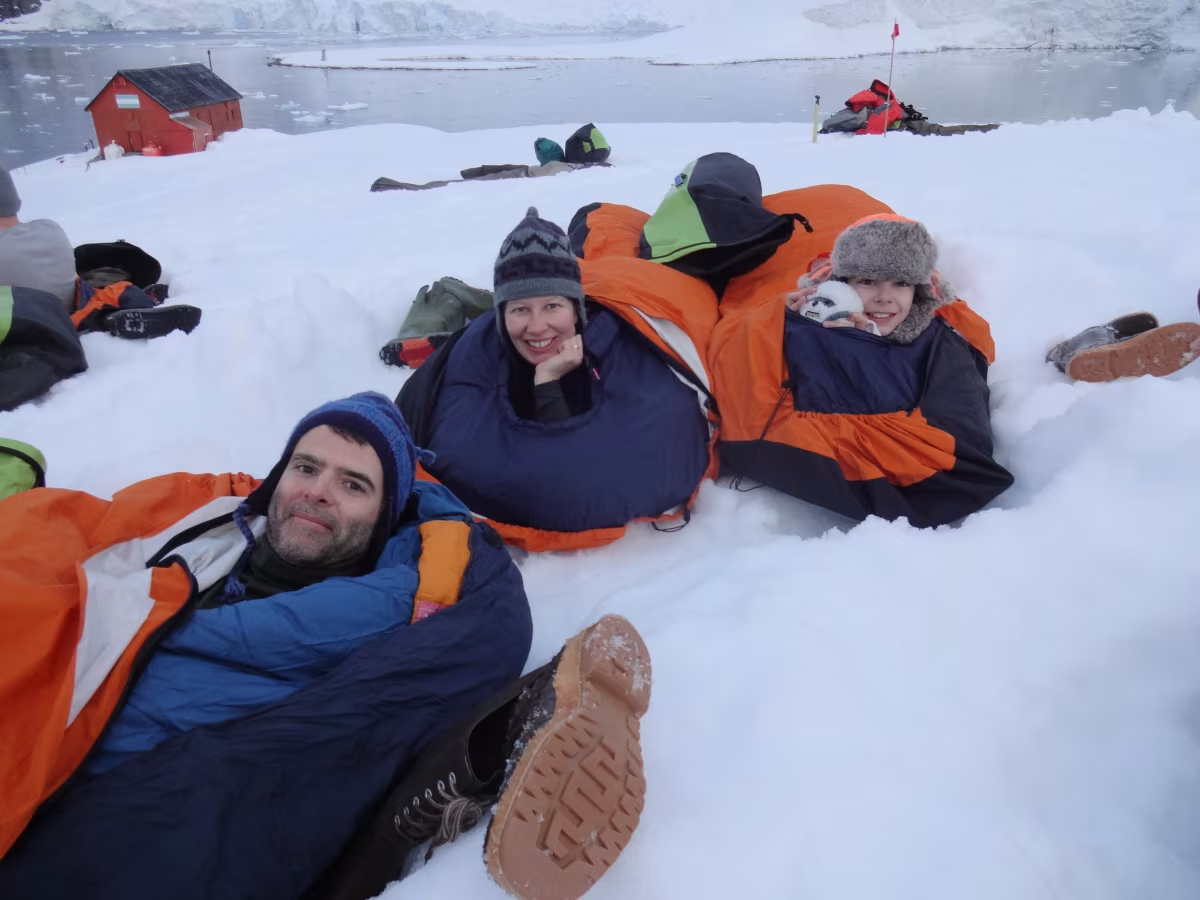
Clothes to bring for camping
Please pack for the worst weather, as conditions in Antarctica can change rapidly. Below is a list of important items you must bring yourself:
- Thermal underwear, fleece vest or jacket, and down jacket that is breathable (e.g., Gore-Tex)
- Warm hat and turtleneck or neck gaiter
- Thermal under-gloves, fleece finger gloves, or warm mittens
- Thick socks with spares
- Good UV-protectant sunglasses
- Sun cream or sunblock
- Flashlight or lightweight headlamp for departures in February – March
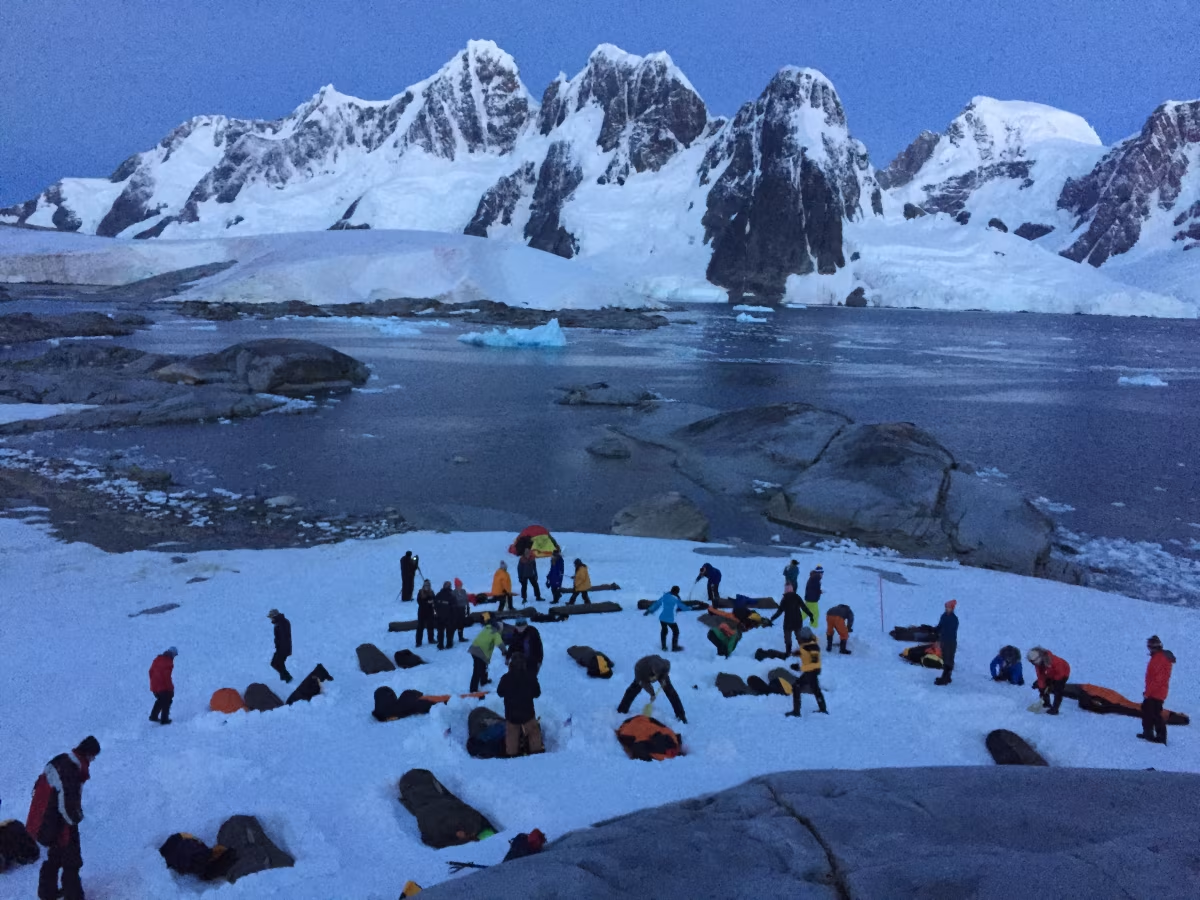
Gear we provide for camping
- Insulated waterproof rubber boots
- Bivouac bag (one per person) and mattress
- Waterproof sleeping bag with cotton inner liner
- Portable field toilet (one per group)
Special note: Cotton clothing, such as normal T-shirts and jeans, are not advisable. Cotton tends to get wet and stay wet while moving in a cold environment. We recommend thermal underwear.

Weather conditions
Exploring remote and wild regions like Antarctica requires a sensible and flexible approach. Although there can be clear skies with bright sunshine, the weather is unpredictable. Katabatic winds caused by the icecaps and glaciers can pick up suddenly and are a fierce opponent for polar travelers. Such conditions might also lead to the cancelation of planned camp nights. If local circumstances prevent us from camping on shore, we may attempt to camp on the open decks of the ship.
In order for the camping activity to take place, we must have at least 10 passengers who intend to camp. Only 30 passengers can camp at any one time, and we always assign one expedition guide per every 20 campers to assist and supervise operations.
Lastly, we do not use tents as part of our camping equipment. Tents are greatly affected by wind in Antarctica, and using them greatly reduces the weather in which we can camp.
Instead, we have found that bivouac sleeping bags offer us the best odds of being able to follow through with our camping activity. They also provide an unparalleled experience by allowing you to see and hear all that is happening around you, from the noise of penguin calls to the sound of whale blows. They also offer the best view of the beautiful Antarctic skies.

Camping FAQ
Is it possible to take food?
Eating food and snacks on shore is not allowed, per the Antarctic Treaty and IAATO regulations, in order to prevent the spread of outside plants or contaminants.
Can I go to the toilet?
Toilet visits should be avoided on land, per the Antarctic Treaty and IAATO regulations. Campers are encouraged to instead use toilet facilities on board prior to camping. A portable toilet will be available on shore, however, and all solid waste must be returned to the ship. It is advisable that campers bring a “pee bottle” (e.g., wide-opening Nalgene bottle) for their comfort.
Where and how long do we stay on shore?
We offer near-shore camping on the continent and / or nearby islands depending on the itinerary, weather, and regulations. Camping groups stay a maximum of 10 hours on shore.
What if local weather and ice conditions are unsafe for camping?
The expedition leader will do their best to ensure the camping activity takes place. But if local circumstances prevent us from camping on shore, we may attempt to camp on the open decks of the ship.

Is prior experience required?
Everyone can participate in this activity without previous experience. There are no physical requirements except helping the guides put up and clean the campsite. Please note, however, that we are not camping in a campground: There can be rocks, snow, mud, and frozen surfaces. We expect our campers to help prepare the campsite and break camp the next morning. All equipment must be cleaned thoroughly after use. The weather can sometimes make these tasks difficult.
What are the weather conditions?
Around the coasts of Antarctica, temperatures are generally close to freezing in the summer (December – February) or slightly above freezing in the northern part of the Antarctic Peninsula. The temperatures in Antarctica vary between about -5 to 8°C (23 to 46°F). In strong wind, these temperatures can feel sub-zero. Warm clothing, a flexible attitude, and a sense of adventure are the best ways to overcome these sometimes-harsh conditions.

